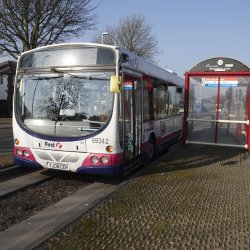We need to assemble the case for bus – piece by piece
Facts and evidence doesn’t always win the day (otherwise we would be living in a very different world!) but if you want to win a public policy debate having a combat ready armoury of evidence at your disposal is important. And important becomes vital when you are battling to change the status quo rather than maintain it. I think that we (as in the local transport authorities and bus operators) have more work to do in assembling that armoury if the argument on winning the case for investing and supporting bus services is to be won. We are on a battlefield where the bus just does not have the same political territorial advantage that cars, trains and planes already have. It’s in these situations where you need all the factual ammunition you can get. The hammering that the funding stream for small to medium-size public transport schemes (including bus priority schemes) took in the spending review is an example of what can happen when your evidence base isn’t as well delineated as it should be. The funding stream for these schemes (known as the Integrated Transport Block) has been halved since the election – the specific reason given for this by DfT and HMT is that the evidence for its benefits just wasn’t strong enough. This is remarkable given that a) there’s a consensus that bus punctuality is a key priority for the sector b) that bus priority is a key factor in delivering that better punctuality.
The case for bus priority is strong – it just hasn’t been compiled properly

Yet despite this local transport authorities and the bus industry wasn’t able to provide the Government with a sufficiently convincing set of facts, figures, case studies and evidence to persuade them of the benefits. The frustrating thing is that it’s not that the case for bus priority isn’t strong – it’s just that it hadn’t been compiled properly. Although to be fair there are extenuating circumstances. Big expensive transport schemes (like new tram schemes or roads) justify big expensive appraisal and evaluation processes. Smaller schemes don’t justify the same expenditure on measuring their success. Measuring the benefits of some bus schemes is also intrinsically harder. For example how do you quantify the value of transforming a grotty old bus station into a modern facility? Plus the bus user demographic is poorer than that of car and train users and therefore the time savings benefit (on which conventional cost benefit appraisal rests) are lower.
However, extenuating circumstances apart we still need to do better. We made a start in the first half of this year with a report we published in July on the benefits of small to medium size public transport schemes. The good news was that the report showed that the available evidence shows that these schemes score consistently well in cost benefit terms. The report also set out a cut down appraisal and evaluation process specifically designed for smaller schemes. All of which should help as we further develop the evidence base.
Changes are also afoot in Government thinking on appraisal and evaluation that might also help us. Conventional cost benefit analysis will always be important but perhaps not quite as front and centre as it traditionally has been, as the appraisal wonks move towards a system that places CBA within a wider framework – or story – about what a scheme is trying to achieve and how.
We also now need to move onto developing the evidence base for bus services in general – economically, environmentally, socially – and pteg will make its contribution to this wider mission in the second half of this year. The need for this is particularly pressing given both ATCO’s predictions on future bus cuts, and recent work we commissioned specifically on scenarios for bus services in the Mets. Both of which suggest that business as usual on bus funding will mean decline as usual (at best!). There’s always a danger for any relatively marginalised sector that it retreats into a comfort zone of feeling hard done to and resorting to self-righteous grumbling, emotion, anecdote and assertion. There’s no doubt that assertion, anecdote and emotion can be persuasive (any good political speech is all about the guts not the head) but if we want to persuade Hammond and Her Majesty’s Treasury then we need a well-articulated evidence base that will stand up to their stony faced scrutiny.
Jonathan Bray
This article was first published in Coach and Bus Week